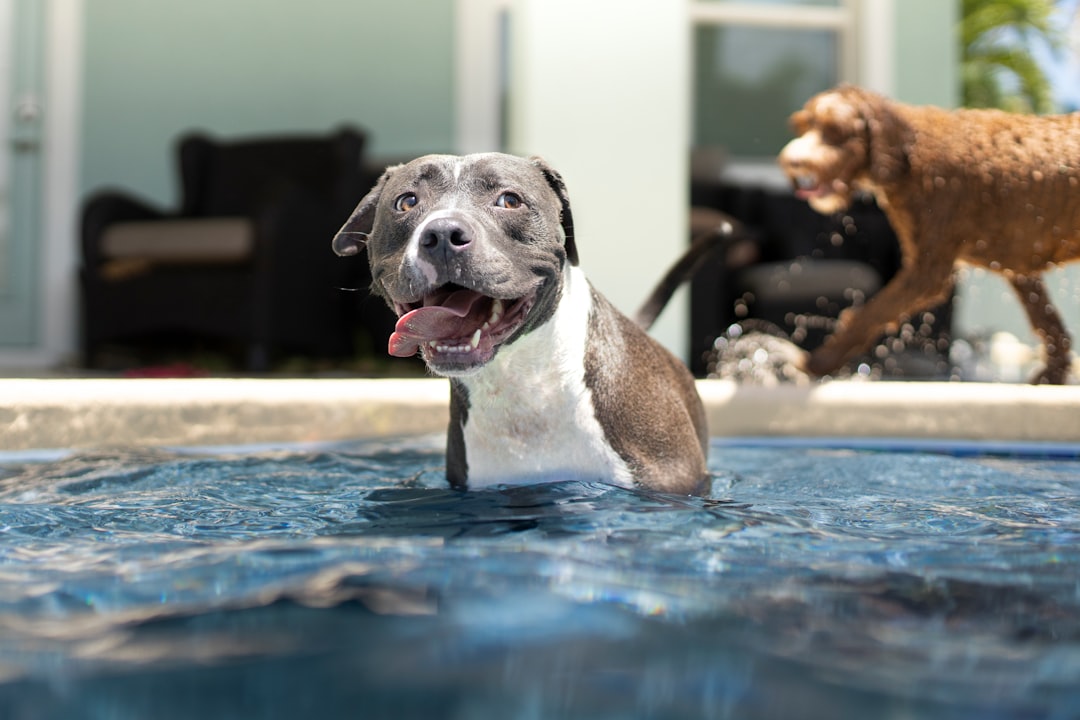Dive into Wellness: The Comprehensive Guide to Swimming for Dogs
Discover the numerous benefits of swimming for dogs, including improved physical strength, joint health, mental enrichment, and rehabilitation for dogs with health conditions, while also considering safety precautions and breed considerations.
Introduction: Exploring the Importance of Swimming for Canine Health
Swimming not only provides physical benefits for dogs but also contributes significantly to their mental well-being. The aquatic environment offers a unique sensory experience for dogs, stimulating their senses with the sounds and smells of water, ultimately providing mental enrichment. Furthermore, swimming can boost a dog’s confidence, particularly beneficial for timid or anxious dogs who may find solace and empowerment in the water. For instance, a shy rescue dog may blossom and display newfound confidence while paddling in a safe and controlled swimming area, showcasing the transformative power of swimming on a dog’s mental state.
In addition to the mental advantages, swimming is a versatile form of exercise that can cater to dogs with various health conditions. Hydrotherapy facilities offer specialized equipment like underwater treadmills, specifically designed to assist dogs with orthopedic or neurological injuries during their rehabilitation process. For example, a dog recovering from surgery to repair a torn ligament can benefit immensely from hydrotherapy, as the buoyancy of water reduces pressure on the joints, allowing the dog to rebuild strength and mobility gradually. Regular swimming sessions not only aid in preventing muscle atrophy but also help in maintaining proper body condition in dogs with limited mobility, promoting overall health and well-being.
 Physical Benefits of Swimming for Dogs
Physical Benefits of Swimming for Dogs
Swimming not only helps build muscle mass and improve flexibility in dogs, leading to increased overall strength, but it also plays a crucial role in weight management for our furry friends. The buoyancy of water supports the dog’s weight, allowing them to engage in physical activity without putting excessive strain on their joints, making it an ideal exercise for overweight dogs looking to shed some pounds. For instance, breeds such as Labrador Retrievers, known for their love of water and high energy levels, can greatly benefit from swimming to maintain a healthy weight and stay active.
In addition to weight loss, swimming can be particularly beneficial for dogs with joint disorders. For instance, dogs suffering from arthritis or hip dysplasia can find relief in the low-impact nature of swimming, as it helps reduce inflammation in the joints, leading to improved mobility and decreased discomfort. By engaging in regular swimming sessions, dogs with these conditions can experience a significant improvement in their quality of life, allowing them to move more comfortably and enjoy a better range of motion.
 Mental Benefits of Swimming for Dogs
Mental Benefits of Swimming for Dogs
Swimming provides not only physical benefits but also significant mental advantages for dogs. For instance, timid or anxious dogs can benefit greatly from swimming as it can boost their confidence and independence. This is exemplified in cases where previously hesitant dogs gradually become more self-assured and comfortable in the water, showing marked improvements in their overall demeanor and behavior. Moreover, the sensory experience of swimming, such as the feel of the water, the sounds of splashing, and the smells unique to aquatic environments, can offer dogs mental stimulation and enrichment, engaging their senses in a novel and exciting way.
Furthermore, swimming often evokes a sense of joy and freedom in dogs, contributing positively to their mental well-being. Dogs display an innate sense of happiness and contentment while swimming, showcasing their natural affinity for water and the pleasure they derive from this activity. This sense of freedom and enjoyment can have a therapeutic effect on dogs, reducing stress levels and promoting relaxation, akin to the benefits humans experience from engaging in recreational activities they love.
Swimming for Dogs with Health Conditions
Swimming has emerged as a vital component in the care and rehabilitation of dogs with various health conditions. Hydrotherapy facilities are at the forefront of this practice, providing specialized equipment like underwater treadmills tailored to meet the unique needs of individual dogs. For instance, after undergoing orthopedic or neurological injuries, dogs can benefit significantly from aquatic therapy, including swimming, as it aids in improving their recovery outcomes by enhancing mobility and strength.
Moreover, the regular practice of swimming not only prevents muscle atrophy but also helps in maintaining an optimal body condition for dogs with limited mobility. This aspect is crucial in promoting the overall well-being of these dogs, ensuring that they can lead fulfilling lives despite their health challenges. For example, by engaging in swimming sessions, dogs with arthritis or dysplasia can experience improved joint mobility and reduced discomfort, contributing to a better quality of life. Additionally, swimming serves as a low-impact exercise that can support weight management and cardiovascular health, further benefiting dogs with health conditions.
Safety Precautions for Swimming with Dogs
Ensuring the safety of dogs during swimming sessions is paramount to prevent any potential risks or accidents. It is advisable to supervise dogs closely while they swim and to always have a clear line of sight to monitor their well-being. Additionally, providing dogs with life jackets can offer an extra layer of protection, especially for those who may be less experienced or confident swimmers. Introducing dogs to swimming in a controlled environment, such as a designated dog swimming pool, can help create a safe and secure setting for them to enjoy the water.
Moreover, being mindful of the weather conditions is crucial when planning a swimming session with dogs. Extreme temperatures, whether too hot or too cold, can impact a dog’s ability to swim comfortably and safely. In hot weather, it’s essential to provide access to shade and fresh water to prevent overheating and dehydration. Conversely, in colder climates, ensuring that the water temperature is suitable for the dog’s well-being is vital to prevent any negative effects on their health. By taking these precautions and being attentive to the surroundings, swimming can be a rewarding and safe activity for dogs to engage in.
Breed Considerations for Swimming
When considering swimming activities for dogs, it is essential to acknowledge that certain breeds are better suited for aquatic exercises based on their physical attributes and genetic predispositions. For instance, Newfoundlands, known for their webbed feet and water-resistant double coats, are natural swimmers excelling in tasks like water rescue due to their innate swimming abilities. Similarly, Chesapeake Bay Retrievers, bred for retrieving waterfowl, are equipped with an oily, dense coat that aids in buoyancy and insulation in cold water, making them proficient swimmers.
Moreover, Poodles, despite their elegant appearance, are highly capable swimmers attributed to their athletic build, intelligence, and water-repellent curly coats. These breeds not only enjoy swimming but also benefit greatly from this form of exercise due to their genetic makeup. On the other hand, breeds like Bulldogs, with their brachycephalic skulls and compact bodies, may find swimming more challenging and may tire more easily in the water. Therefore, it is crucial to understand the specific needs and limitations of different breeds when engaging them in swimming activities to ensure their safety and well-being.
Conclusion: Harnessing the Therapeutic Power of Swimming for Canine Well-being
Swimming not only serves as a vital physical exercise for dogs but also plays a significant role in enhancing their mental well-being. The therapeutic benefits of swimming go beyond muscle strengthening and flexibility; it also aids in relieving stress and anxiety in dogs, promoting a sense of calm and contentment. For example, timid or anxious dogs may find swimming to be a confidence-boosting activity, helping them overcome their fears and become more independent in their behavior. This mental stimulation through swimming contributes to the overall happiness and emotional health of dogs, showcasing the profound impact of this activity on their well-being.
Moreover, the inclusion of swimming in a dog’s routine can lead to substantial improvements in their cardiovascular fitness and endurance levels. The resistance provided by the water during swimming sessions not only challenges the dog’s muscles but also enhances their overall stamina and endurance. As an illustration, breeds like Newfoundlands and Chesapeake Bay Retrievers, known for their exceptional swimming abilities, demonstrate how regular swimming can significantly improve a dog’s cardiovascular health and fitness. By engaging multiple muscle groups simultaneously, swimming offers a full-body workout that not only strengthens the dog’s physique but also boosts their overall vitality and longevity, underscoring the therapeutic power of this aquatic activity for canine well-being.



